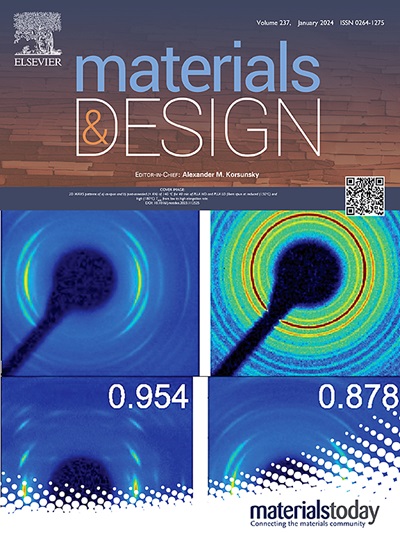Multimodal analysis of aluminum-steel dissimilar joint interface: Strength improvement mechanism through Ni addition
IF 7.9
2区 材料科学
Q1 MATERIALS SCIENCE, MULTIDISCIPLINARY
引用次数: 0
Abstract
To reduce vehicle weight and CO2 emissions, multi-material automotive structures combining Al alloys with steel are in high demand. However, dissimilar joining of Al alloys to steel is still challenging due to the formation of a brittle intermetallic layer (IML) at the joint interface, which deteriorates joint strength. In this study, the effect of Ni on the joint strength, microstructure, and local mechanical properties of the IML of Al/steel joints was examined. Although the Ni increased the IML thickness, it significantly increased the joint strength by 138%. Multimodal analysis revealed that Fe (α) incorporated into the IML had a greater effect on joint strength than on the local IML properties: the presence of α promoted the formation of voids in the IML, deteriorating joint strength. FIB-SEM serial sectioning showed that Ni addition resulted in the formation of a dense IML with minimal α content, thereby suppressing void formation and improving joint strength. Local mechanical properties of the IML were unaffected by Ni, indicating that strength improvement was not due to changes in intrinsic mechanical properties. The findings suggest that Ni improved joint strength by modifying IML morphology rather than reducing its thickness, providing insights for designing robust Al/steel joints.

铝-钢异种接头界面的多模态分析:添加Ni提高强度的机理
为了减轻汽车重量和减少二氧化碳排放,需要将铝合金和钢结合在一起的多材料汽车结构。然而,铝合金与钢的异种连接仍然具有挑战性,因为在连接界面处形成脆性金属间层(IML),从而降低了连接强度。在本研究中,研究了Ni对Al/钢接头强度、显微组织和局部力学性能的影响。Ni虽然增加了IML厚度,但显著提高了接头强度138%。多模态分析表明,Fe (α)加入IML对接头强度的影响大于对局部IML性能的影响:α的存在促进了IML中空洞的形成,降低了接头强度。FIB-SEM连续切片显示,Ni的加入使IML形成致密且α含量极低,从而抑制了空洞的形成,提高了接头强度。IML的局部力学性能不受Ni的影响,表明强度的提高不是由于内在力学性能的改变。研究结果表明,Ni通过改变IML的形态而不是减少其厚度来提高接头强度,这为设计坚固的Al/钢接头提供了见解。
本文章由计算机程序翻译,如有差异,请以英文原文为准。
求助全文
约1分钟内获得全文
求助全文
来源期刊

Materials & Design
Engineering-Mechanical Engineering
CiteScore
14.30
自引率
7.10%
发文量
1028
审稿时长
85 days
期刊介绍:
Materials and Design is a multi-disciplinary journal that publishes original research reports, review articles, and express communications. The journal focuses on studying the structure and properties of inorganic and organic materials, advancements in synthesis, processing, characterization, and testing, the design of materials and engineering systems, and their applications in technology. It aims to bring together various aspects of materials science, engineering, physics, and chemistry.
The journal explores themes ranging from materials to design and aims to reveal the connections between natural and artificial materials, as well as experiment and modeling. Manuscripts submitted to Materials and Design should contain elements of discovery and surprise, as they often contribute new insights into the architecture and function of matter.
 求助内容:
求助内容: 应助结果提醒方式:
应助结果提醒方式:


